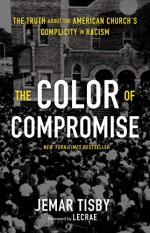
|
| Name: _________________________ | Period: ___________________ |
This test consists of 5 multiple choice questions, 5 short answer questions, and 10 short essay questions.
Multiple Choice Questions
1. What incident led to the formation of the Southern Baptist Convention?
(a) The Baptist church argued that white Christians should enlist in the army.
(b) The Baptist church appointed a slave-owning preacher.
(c) The Baptist church removed Black congregants from their rosters.
(d) The Baptist church refused appoint slaveholders to office.
2. What led to the split of the Methodist Episcopal Church?
(a) The church congregation disagreed on the question of segregation.
(b) The church congregation argued over a piece of political legislation.
(c) A slave-owning bishop refused to either resign or give up his slaves.
(d) A slave-owning parishioner was excommunicated from the church.
3. According to Tisby, what organization worked to erect Confederate monuments after the Civil War?
(a) United Daughters of the Confederacy.
(b) Daughters of the American Revolution.
(c) Preservation of the Virginia Antiquities.
(d) Colonial Dames of America.
4. What term was used the describe the mixing of different races?
(a) Revitalization.
(b) Regionalization.
(c) Acclimatization.
(d) Mongrelization.
5. Why did Linda Browns parents originally want to send her to an all-white school?
(a) They wanted to send her to a boarding school.
(b) The all-white school offered better facilities and teachers.
(c) They wanted to directly oppose racism.
(d) The all-white school didn't charge any fees.
Short Answer Questions
1. In Chapter 7, Tisby speaks about that the "conspicuousness of white supremacy in the south" (129). According to him, what is one side-effect of this phenomenon?
2. What motivated George Pepperdine to found his university?
3. What was the term for the system of laws and customs used to control Black people after the Civil War?
4. What was the nickname for the state of Kansas during the years leading up to the Civil War?
5. According to Tisby, in what organization did MLK start his activist career?
Short Essay Questions
1. According to Tisby, how did most white Christian moderates responds to the civil rights movement?
2. What prompted William J. Seymour's religious activities?
3. In Chapter 8, Tisby argues that white moderates during the civil rights movement failed to understand something about racism. What does he believe they missed?
4. What happened in the Watts neighborhood of LA in 1965?
5. What was Theodore Bilbo's opinion on racial intermixing?
6. What was the outcome of Brown vs. The Board of Education of Topeka?
7. What is the "social gospel," as outlined in Chapter 7?
8. According to Tisby, why did many white Christian moderates support a "law and order" (142) approach over the civil rights movement?
9. Following the Scopes Trial of 1925, what did many white Christians fear?
10. Who were the Freedom Riders?
|
This section contains 719 words (approx. 3 pages at 300 words per page) |

|




